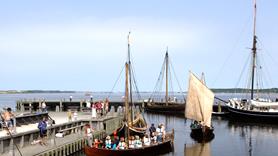Attractions in Copenhagen
Copenhagen has attractions and sights to suit every taste and interest – and most of them are within walking distance. The three most famous attractions in the city are most likely the more than 100-year old amusement park Tivoli Gardens, the statue of The Little Mermaid, and the freetown of Christiania. But Copenhagen has a lot more to offer. With a history that dates back to 1043 the city is full of historic landmarks, significant buildings and interesting sights and museums. Be sure to visit Amalienborg Palace – home to the royal family – and walk down the shopping street Strøget.
The Little Mermaid
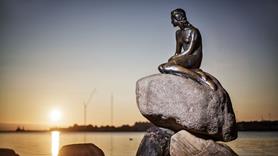
At Langelinje Pier you will find one of Copenhagen’s most famous tourist attractions: The sculpture of The Little Mermaid. 23 August 2013 she turned 100 years old. Unveiled on 23 August 1913, The Little Mermaid was a gift from Danish brewer Carl Jacobsen to the City of Copenhagen. The sculpture is made of bronze and granite and was inspired by Hans Christian Andersen’s fairy tale about a mermaid who gives up everything to be united with a young, handsome prince on land. Every morning and evening she swims to the surface from the bottom of the sea and, perched on her rock in the water, she stares longingly towards the shore hoping to catch a glimpse of her beloved prince.
Nyhavn
Nyhavn was originally a busy commercial port where ships from all over the world would dock. The area was packed with sailors, ladies of pleasure, pubs and alehouses. Today the beautiful old houses have been renovated and classy restaurants dominate the old port. Nyhavn is filled with people enjoying the relaxed atmosphere by the canal, jazz music and great food.
Strøget
Copenhagen’s largest shopping area is centered around Strøget in the heart ofthe city.Strøget is one of Europe’s longest pedestrian streets with a wealth of shops, from budget-friendly chains to some of the world’s most expensive brands. The stretch is 1.1 kilometers long and runs from City Hall Square (Rådhuspladsen) to Kongens Nytorv. Strøget is a nickname from the 1800s and covers the streets Frederiksberggade, Nygade, Vimmelskaftet and Østergade and Nytorv square, Gammeltorv Square and Amagertorv Square.
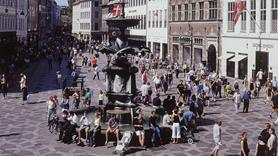
Christiania
Christiania, the famous freetown of Copenhagen, is without a doubt one of Denmark’s most popular tourist attractions. Christiania was founded in 1971, when a group of people cut a hole in the fence to the military barracks in Bådmandsgade. Soon the area was known for Pusher Street, where you could buy hash and pot – but no hard drugs – from various stalls. Today many of the original settlers still live in the collectively controlled village, and the area has a clear 70s feel to it. Around 1,000 people live in Christiania and every year more than 500,000 people come to visit.
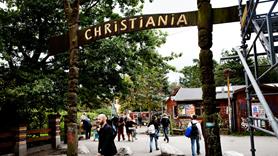
Tivoli Gardens
Tivoli is a must for all children and those who like to play. Tivoli is located just a few minutes walk from City Hall, and with the Copenhagen Central Station as its nearest neighbour it is very easy to get to. In 2013 Tivoli Gardens presented a new 600 m2 Tycho Brahe area with three new rides, one of them being the 4G ride Aquila, live music is on the programme every day, fireworks every Saturday and international artists like Sting and Suede plays live on the open air stage.
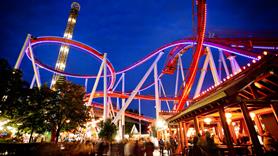
Louisiana Museum of Modern Art
The beautiful museum, Louisiana Museum of Modern Art, is located 40 kilometers north of Copenhagen and it has gained a reputation as a museum in touch with the zeitgeist of the contemporary art world. You can always be sure to take in refreshing and innovative contemporary art as well as modernist classics when you visit Lousiana. Besides the impressive permanent collection with over 3,000 works, the museum has 8-12 special exhibitions annually. See ‘events’ for further information.
The National Museum
Denmark’s National Museum in Copenhagen has exhibitions from the Stone Age, the Viking Age, the Middle Ages, the Renaissance and Modern Danish History.
The National Museum is located in The Prince’s Palace, which was built by Nicolai Eigtved between 1743 and 1744 for Danish Crown Prince Frederik V and Crown Princess Louise. It is no longer used by the royal family, but the Great Hall still appears elegant enough to fit princes and princesses. The Gallery consists of a wide corridor that linked rooms and sleeping quarters, and featured plenty of space for exquisite handicrafts. The stucco in the ceiling, the panels and the oak parquet floor are all thought to be original. The furniture and stove are from the early 18th century
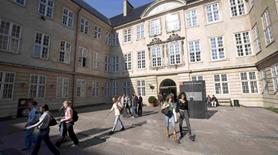
The Round Tower
The 17th century tower and observatory Rundetårn, or the round tower, is the oldest functioning observatory in Europe.
When Christian IV built the tower, Denmark was quite famous for its astronomical achievements thanks to the astronomer Tycho Brahe. When he died in 1601, the King wished to continue Brahe’s research, and thus the round tower came into being. It has been a while since the scientists left, but the observatory is still used by amateur astronomers and the many visitors. The observatory is encircled by an outdoor platform from which you have a magnificent view of the old part of Copenhagen. To get there you need to walk up the spiral walk, which is 268,5 meters long at the outer wall and only 85,5 meters long close to the core of the building. This means that you walk around 209 meters to get to top even though the tower is only 36 meters tall.
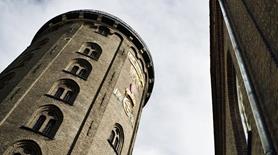
The National Gallery of Denmark
Statens Museum for Kunst is Denmark’s largest art museum, featuring outstanding collections of Danish and international art from the past seven centuries. Contemporary art exhibits are displayed in the X-Room. Exhibits range from installation art to photography and media art. Apart from the permanent collection the museum also shows temporary exhibitions. Recently both Picasso and Bob Dylan have had some of their paintings exhibited.
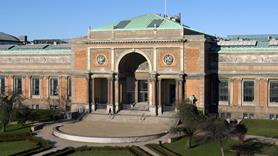
Open Air Museum
The Open Air Museum, Frilandsmuseet, is one of the oldest and biggest open air museums in the world. The Open Air Museum north of Copenhagen is one of the largest and oldest in the world. Spread across 86 acres of land, the museum houses more than 50 farms, mills and houses from the period 1650-1940. The buildings were re-errected with gardens and surrounding landscape to give visitors an impression of the history and environments of the country life as it was. Virtually every region in Denmark and the Faeroe Islands as well as the former Danish provinces of southern Sweden and northern Germany is represented at the Open Air Museum so you can travel the length and breadth of Denmark in a single afternoon – just a stone’s throw from Copenhagen centre.

Rosenborg Castle
Rosenborg Castle in Copenhagen is home to some of Denmark’s greatest cultural treasures. The castle was built by Christian IV as a pleasure castle. In the basement you will find the Danish crown jewels and regalia. Rosenborg Castle was inhabited by the royal family until 1720. But since 1838, the castle with all its contents has been a historical museum. The museum has a sister museum at Amalienborg Palace, called Amalienborg Museum. Among the main attractions at Rosenborg are the Great Hall with the coronation throne, which is guarded by three lions of silver. In the Great Hall you will also find the famous Rosenborg tapestries, which have hung here since 1693. They show King Christian V’s victories in the Scanian War 1675-1679. In the castle’s basement you will find the three treasuries with the crowns and the crown jewels.
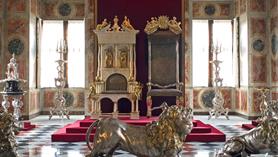
The Royal Reception Rooms
The Royal Reception Rooms at Christiansborg Palace in Copenhagen are used by the Queen and the Prince Consort for official occasions. These occasions include representative dinners in connection with the official visit of foreign heads of state, the official New Year’s Banquet, and for receiving newly appointed ambassadors when they come to deliver their credentials. The Reception Rooms are richly adorned with furniture and works of art rescued from the two earlier palaces, as well as decorations by some of the best Danish artists, such as Nikolaj Abraham Abildgaard, Christoffer Wilhelm Eckersberg and Bjørn Nørgaard. Admission during opening hours provided that the Queen and the Prince are not using the premises for official occasions. Guided tour in English daily at 15:00. The tour is free of charge when a regular admission has been paid.
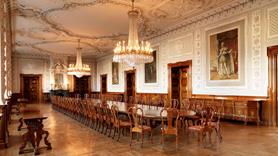
Kronborg Castle
Kronborg Castle in Elsinore, north of Copenhagen, is one of northern Europe’s finest Renaissance castles. It is located at the entrance to Oreound and was built in 1574-1585. Kronborg Castle is probably the most famous Danish castle, known worldwide from Shakespeare’s Hamlet. Hamlet’s spirit is still roaming the hallways of Kronborg, and every summer you can experience Hamlet Scenen perform Hamlet on an open air stage in the courtyard. Frederik 2′s Kronborg is at once an elegant castle and a monumental military fortress surrounded by considerable fortifications with bastions and ravelins. It has not been inhabited by the royal family since the late 1600′s. The castle houses collections of Renaissance and Baroque interiors, and among the main attractions is the 62-metre ballroom, the very well-preserved chapel and the mythologiacal statue of Holger Danske in Kasematterne below the castle.
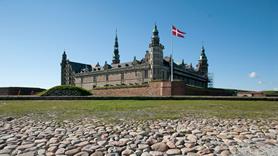
Botanical Garden
Frederiksborg Palace is situated on three islets in the castle lake in Hillerød, north of Copenhagen. The palace, which is surrounded by the beautiful Frederiksborg Palace Garden, was built in the Dutch Renaissance style at the beginning of the 1600s by King Christian 4. The palace was built in Dutch Renaissance style by King Christian 4 in the 17th century. After a devastating fire in the middle of the 19th century, the palace was rebuilt by the owner of the Carlsberg Breweries, J. C. Jacobsen.
ARKEN Museum of Modern Art
ARKEN Museum of Modern Art shows exhibitions with the greatest, Modernist artists alongside exhibitions of contemporary art – from new, young talents to household names. With a Copenhagen Card you will get free entrance at ARKEN. ARKEN is situated in Ishøj, 15 kilometres south of Copenhagen and opened in 1996 as part of a plan to boost the cultural image of the area south of Copenhagen.
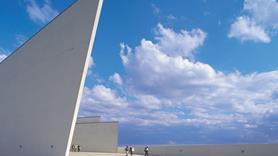
The Viking Ship Museum
Located by the fjord in Roskilde, a mere 35 minutes from Copenhagen, the Viking Ship Museum in Roskilde offers a unique experience to adults and children alike. Feel the history when you are faced with five original Viking ships or even sail on the Roskilde Fjord yourself. The impressive ships reveal stories about war and raids on trade and travel to distant places, and about life at sea 1000 years ago.
